MATLAB构建神经网络识别Mnist手写数字数据集(附代码)
使用MATLAB神经网络构造器识别Mnist手写数字数据集
·
目录
Mnist数据集介绍
Mnist数据集中包含60000张共10类手写数字的图片,每张图片的大小为28*28。部分手写数字图片如下所示:
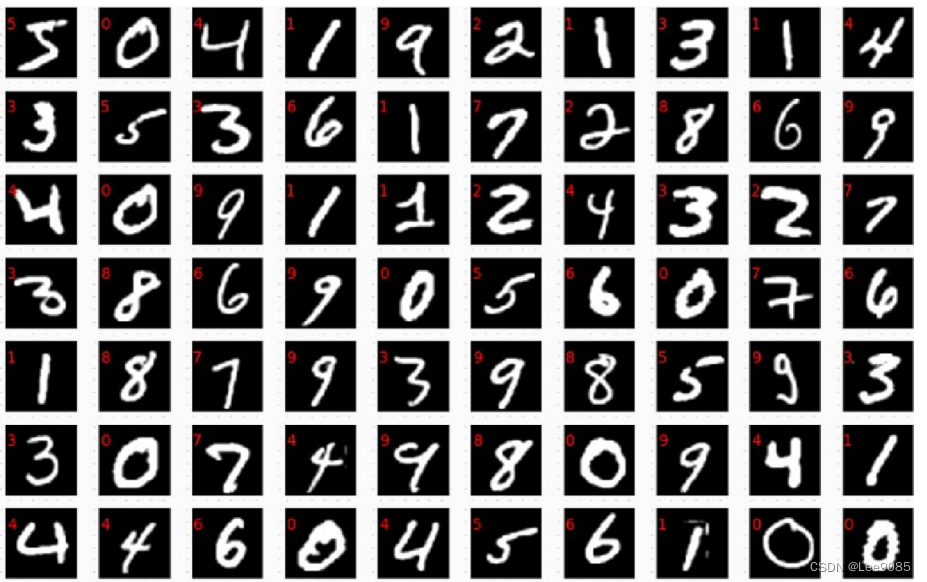
选用其中50000张图片作为训练集,10000张图片作为测试集。
数据集链接:https://pan.quark.cn/s/03a502977f21
构建多层感知机模型
代码:
clear
clc
%导入数据集
matlabroot = './mnist_train_jpg_60000';
digitDatasetPath = fullfile(matlabroot);
imds = imageDatastore(digitDatasetPath,'IncludeSubfolders',true,'LabelSource','foldernames');
%分割数据集
numTrainFiles = 5000;
[imdsTrain,imdsValidation] = splitEachLabel(imds,numTrainFiles,'randomize');
%创建模型
layers = [
imageInputLayer([28 28 1],"Name","imageinput")
fullyConnectedLayer(128,'Name',"fc")
batchNormalizationLayer("Name","batchnorm")
reluLayer("Name","relu")
fullyConnectedLayer(64,'Name',"fc_1")
batchNormalizationLayer("Name","batchnorm_1")
reluLayer("Name","relu_1")
fullyConnectedLayer(32,'Name',"fc_2")
batchNormalizationLayer("Name","batchnorm_2")
reluLayer("Name","relu_2")
fullyConnectedLayer(10,"Name","fc_3")
softmaxLayer("Name","softmax")
classificationLayer("Name","classoutput")];
%训练参数
options = trainingOptions('sgdm', ...
'InitialLearnRate',0.01, ...
'MaxEpochs',4, ...
'Shuffle','every-epoch', ...
'ValidationData',imdsValidation, ...
'ValidationFrequency',30, ...
'Verbose',false, ...
'Plots','training-progress');
%进行训练,并输出最终结果
net = trainNetwork(imdsTrain,layers,options);
YPred = classify(net,imdsValidation);
YValidation = imdsValidation.Labels;
accuracy = sum(YPred == YValidation)/numel(YValidation);
disp(accuracy);模型结构:
生成的模型输入为28*28*1大小的图片,有十个输出(与十种数字类型相对应)。模型包含输入层(imageInputLayer)、全连接层(fullyConnectedLayer)、批量归一化层(batchNormalizationLayer )、激活函数(reluLayer),softmaxLayer层及分类层(classificationLayer)。各层的详细信息与连接顺序图如下所示:

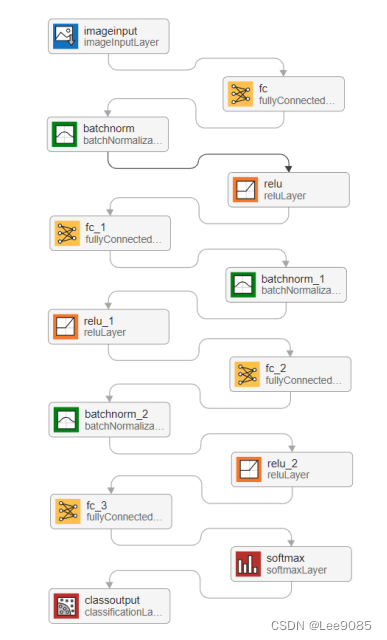
运行结果:
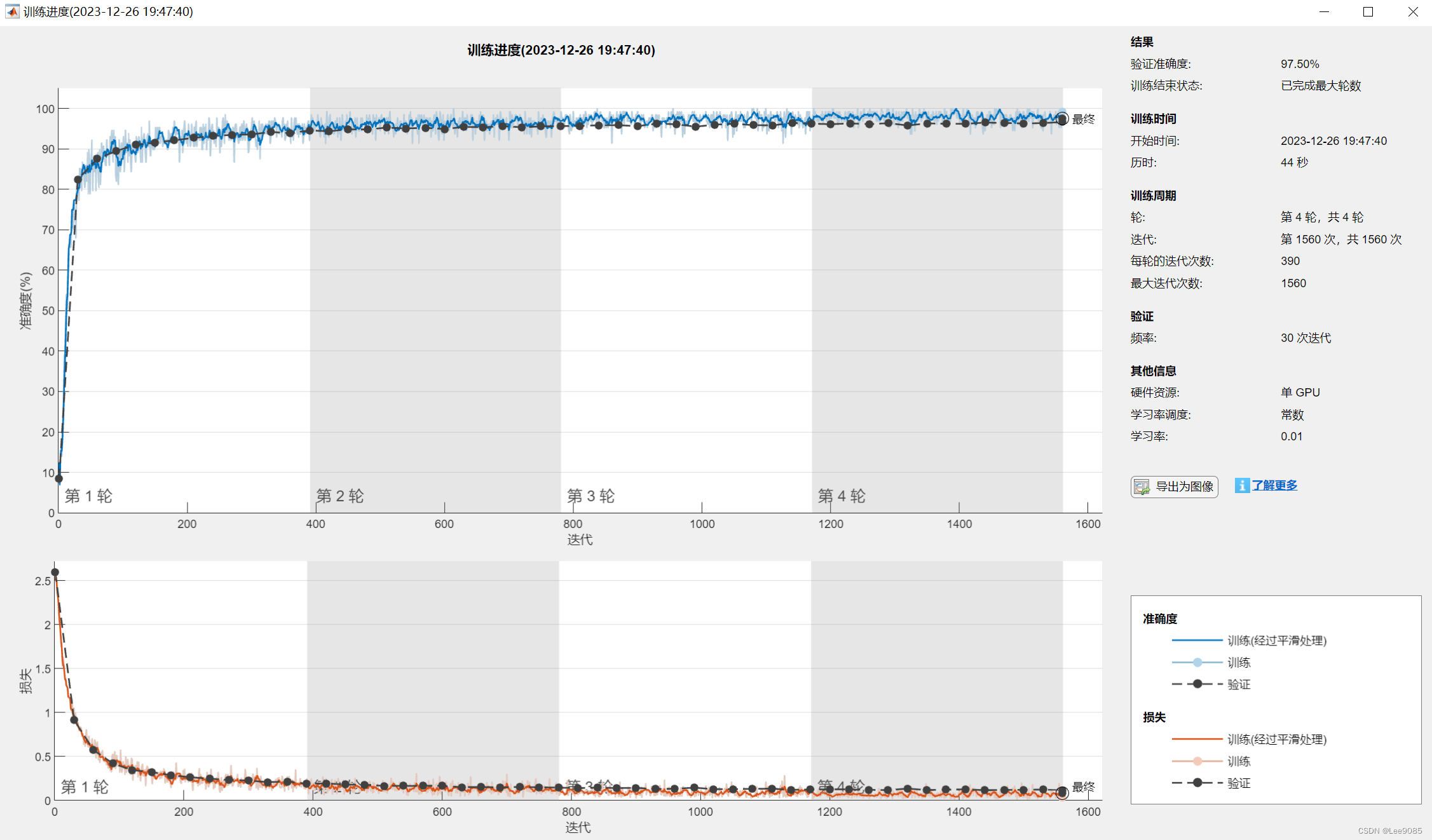
构建卷积神经网络:
代码:
clear
clc
matlabroot = './mnist_train_jpg_60000';
digitDatasetPath = fullfile(matlabroot);
imds = imageDatastore(digitDatasetPath,'IncludeSubfolders',true,'LabelSource','foldernames');
numTrainFiles = 5000;
[imdsTrain,imdsValidation] = splitEachLabel(imds,numTrainFiles,'randomize');
layers = [
imageInputLayer([28 28 1],"Name","imageinput")
convolution2dLayer([3 3],8,"Name","conv","Padding","same")
batchNormalizationLayer("Name","batchnorm")
reluLayer("Name","relu")
maxPooling2dLayer([5 5],"Name","maxpool","Padding","same")
convolution2dLayer([3 3],16,"Name","conv_1","Padding","same")
batchNormalizationLayer("Name","batchnorm_1")
reluLayer("Name","relu_1")
fullyConnectedLayer(10,"Name","fc_3")
softmaxLayer("Name","softmax")
classificationLayer("Name","classoutput")];
options = trainingOptions('sgdm', ...
'InitialLearnRate',0.01, ...
'MaxEpochs',4, ...
'Shuffle','every-epoch', ...
'ValidationData',imdsValidation, ...
'ValidationFrequency',30, ...
'Verbose',false, ...
'Plots','training-progress');
net = trainNetwork(imdsTrain,layers,options);
YPred = classify(net,imdsValidation);
YValidation = imdsValidation.Labels;
accuracy = sum(YPred == YValidation)/numel(YValidation);
disp(accuracy);模型结构:
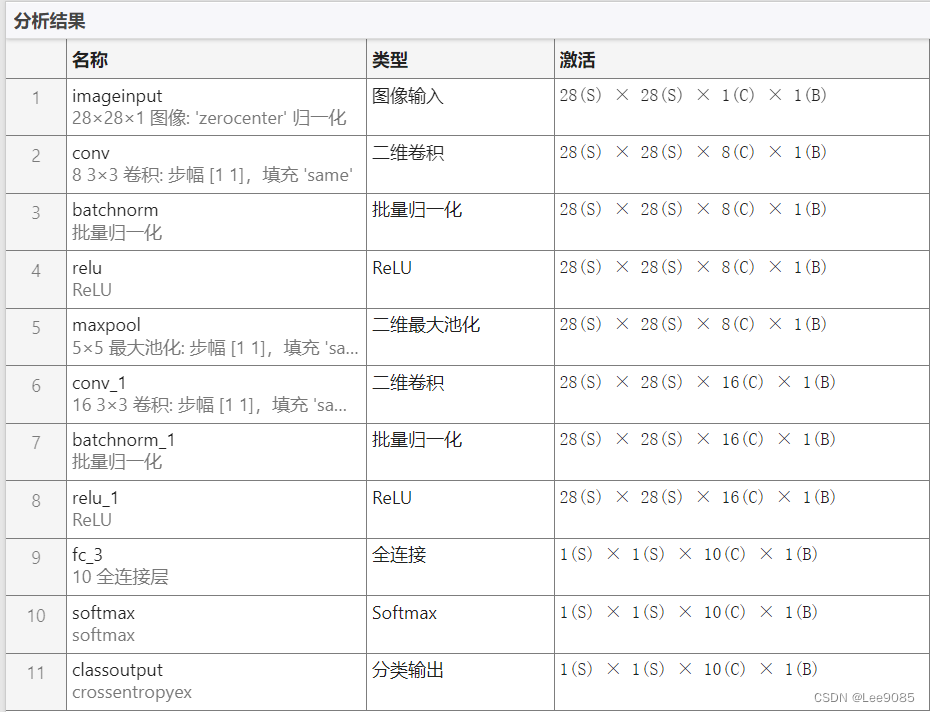
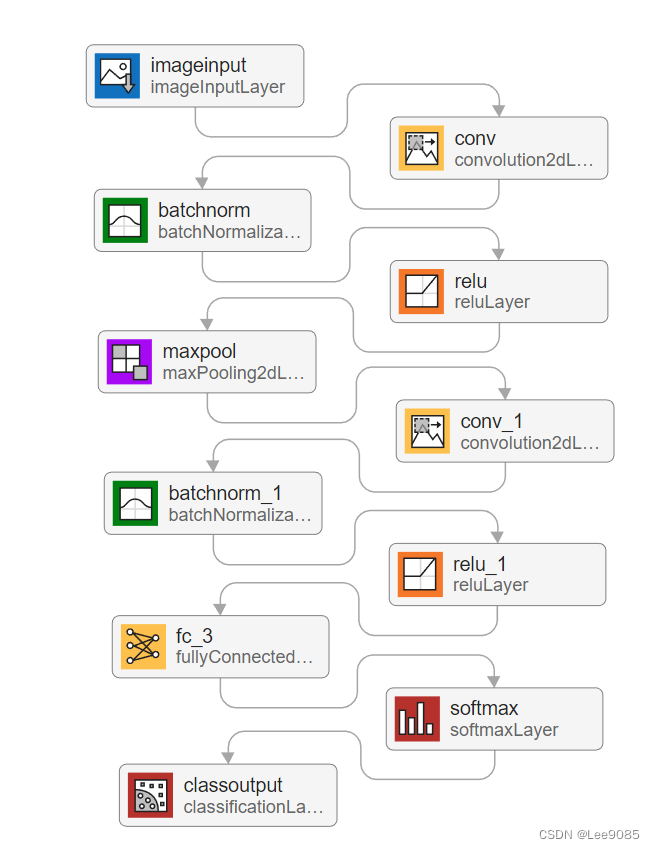
运行结果:
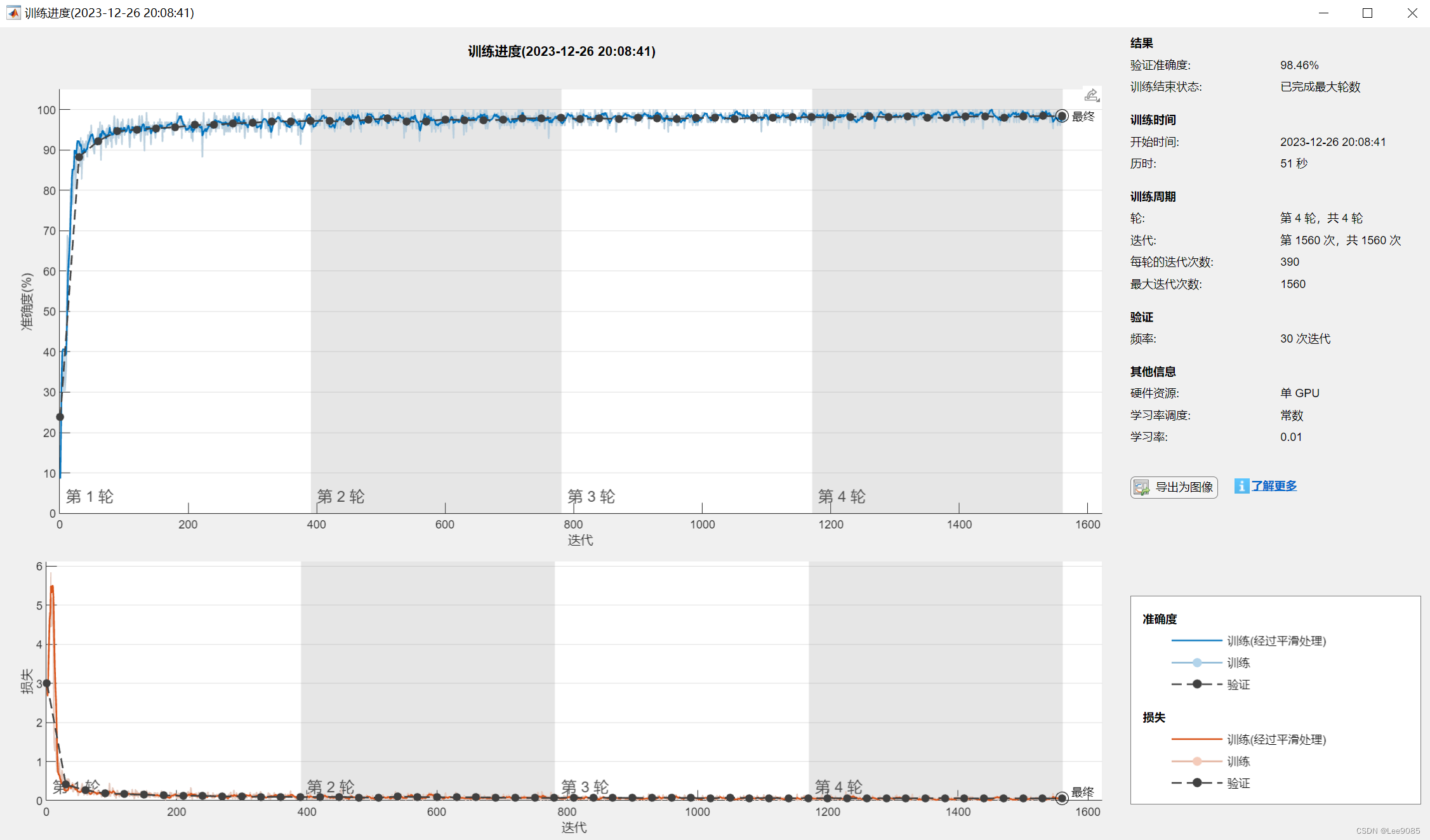
希望能够对你有所帮助!如有错误之处,敬请指正!
更多推荐
 已为社区贡献2条内容
已为社区贡献2条内容


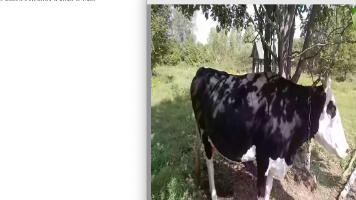
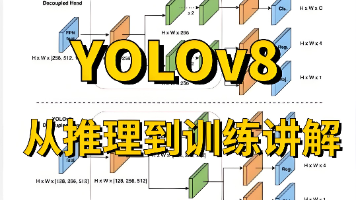
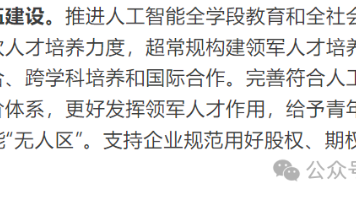





所有评论(0)